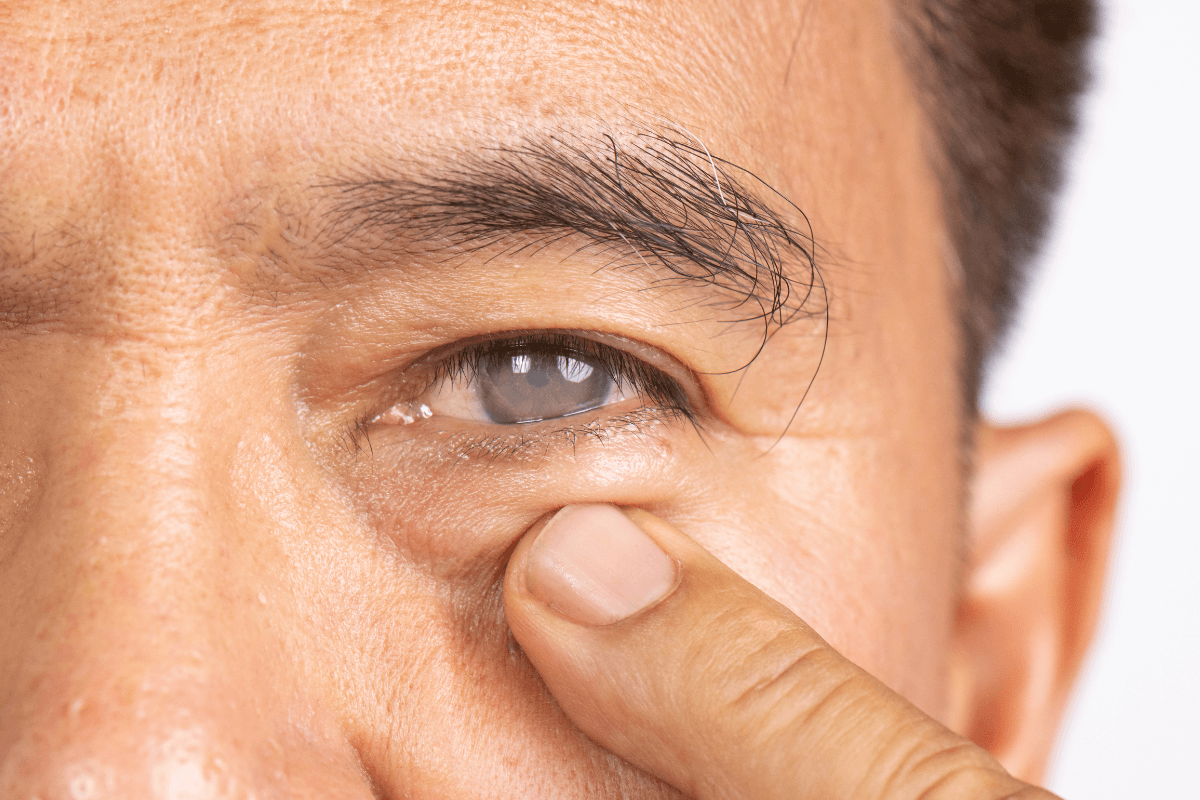Timely eye care prevents avoidable vision loss. Diabetic Eye Disease Month raises awareness about screening, risk control, and treatment choices that help protect sight over time.
Key Takeaways
- Early detection works: regular dilated exams catch retinal changes sooner.
- Control systemic risks: glucose, blood pressure, and lipids all matter.
- Modern therapies help: anti-VEGF, lasers, and surgery when needed.
- Plan awareness milestones: map checkups around annual health observances.
Why Diabetic Eye Disease Month Matters
This observance highlights a simple reality: vision loss from diabetes is not inevitable. Many people live for decades with healthy sight by combining screening, risk-factor management, and timely treatment. Awareness campaigns encourage people to schedule exams, learn their A1C, and ask clinicians about individualized plans.
Awareness also supports caregivers and workplaces. Employers can reinforce protective eyewear rules, good lighting, and breaks for visual tasks. Communities can host screenings and education tables. For an organized set of eye health topics across the year, explore our broader Ophthalmology Articles for additional context and practical tools.
Understanding Diabetic Retinopathy and Related Conditions
Diabetes can damage retinal microvasculature, leading to Managing Retinopathy in Diabetes for in-depth prevention steps and care strategies. Leakage and ischemia may cause macular edema, while abnormal new vessels increase bleeding risk. Over time, scar tissue can distort the retina and impair vision. These changes often progress silently before people notice blurred or fluctuating sight.
Other conditions also occur more often with diabetes. Cataracts can cloud the lens earlier, while glaucoma risk may rise due to optic nerve vulnerability. For a focused overview of seasonal outreach on lens health, see Cataract Awareness Month as a planning touchpoint during the year.
Early Signs and Screening
Many people have no early symptoms, so routine exams matter. Subtle floaters, fluctuating blur, or difficulty reading can develop later. If you notice nighttime glare or patchy vision, contact an eye care professional. Screening with a dilated fundus exam helps detect Metformin and Vision Risk discussion points and other systemic links that may affect ocular status.
Evidence-based guidance emphasizes annual dilated exams for most adults with diabetes, with frequency adjusted for disease stability. For national recommendations on eye exams and early detection, see CDC guidance which explains how exams can uncover changes before symptoms.
Stages of Retinal Disease Progression
Eye professionals classify disease severity to guide follow-up and management. Nonproliferative stages are graded by microaneurysms, hemorrhages, and vessel changes. Advanced disease involves new vessel growth and higher risks of bleeding or traction. Clear staging supports timely intervention and closer monitoring when warranted.
Understanding July Healthy Vision Month resources can help you schedule evaluations during less busy seasons, improving adherence to recommended visits. Discussions during that period often reinforce imaging plans and dilated exam timing for diabetic retinopathy stages characterization and follow-up steps.
Why Damage Occurs: Major Risk Drivers
Hyperglycemia exposes retinal capillaries to metabolic stress and inflammation. Blood pressure and lipid abnormalities compound damage through endothelial strain and leakage. Kidney disease and pregnancy can accelerate progression, while smoking adds vascular risk. Duration of diabetes often remains a strong predictor of cumulative retinal injury.
Talk with your primary team about A1C goals, BP targets, and statin therapy where appropriate. For a practical health-maintenance rhythm, the article on Regular Diabetes Check-Ups explains how coordinated visits support stable control across organ systems and address diabetic retinopathy causes comprehensively.
Treatment Options and Self-Care
Management plans align with disease severity and macular involvement. Intravitreal anti-VEGF injections can reduce edema and stabilize vision. Focal or grid laser may help seal leaks, while panretinal photocoagulation treats neovascular risks. Your clinician may also recommend observation when disease remains mild and stable.
Self-care complements clinic treatments: keep glucose, blood pressure, and cholesterol within targets; avoid tobacco; and manage sleep and activity. For medication profiles related to retinal therapy, see Eylea to understand indications and precautions used in clinical practice. For a concise therapy overview from a federal institute, review the National Eye Institute resource covering anti-VEGF, laser, and surgical choices in diabetic retinopathy treatment.
Lifestyle Habits That Protect Vision
Daily choices strengthen the impact of medical care. Balanced meals and carb awareness support steadier glucose excursions, reducing vascular stress. Regular activity improves insulin sensitivity and blood pressure. Sunglasses with UV protection and appropriate workplace eyewear reduce cumulative light and injury risks. Keep medications organized, track readings, and bring logs to visits. These small habits compound, helping stabilize retinal status alongside clinic-based therapies.
Surgery and Advanced Care
Some people develop non-clearing vitreous hemorrhage or tractional retinal detachment. In these situations, vitreoretinal surgeons may consider pars plana vitrectomy to remove blood and release pulling membranes. Surgery decisions weigh visual potential, macular status, and systemic stability. Recovery plans typically include protective positioning, activity limits, and close follow-up.
For a broader discussion of surgical escalation and long-term monitoring, see Managing Retinopathy in Diabetes for nuanced care pathways beyond initial injections or lasers. When exploring options for diabetic retinopathy surgery, clinicians also review imaging findings and prior response to therapies.
Workplace and Community Awareness
Jobs involving screens, bright light, particles, or chemicals benefit from protective eyewear and regular breaks. Organizations can host safety refreshers, offer vision screenings, and update task lighting. For practical safety planning aligned with community observances, consult Children’s Eye Health and Safety Month to adapt family-friendly tips into workplace training modules.
Broader health campaigns help teams set goals and track progress. Review World Diabetes Day 2025 to coordinate education around glucose control and eye risks, and use November Diabetes Awareness Month as a yearly checkpoint for eye exams. Within daily routines, adopt healthy vision tips such as screen breaks, UV protection, and hydration.
Planning Your Year of Eye Health
Awareness calendars make adherence easier. Place exam reminders near annual events and schedule around work cycles. Use the summer months for extra outdoor protection and winter months for indoor lighting and humidity adjustments. Pair every primary care visit with a quick eye-exam status check.
To build a seasonal plan, the article on July Healthy Vision Month offers timely reminders to reset routines midyear. If you are exploring medications and systemic factors that influence ocular outcomes, the piece on Metformin and Vision Risk provides research context to discuss with your clinician. For workplace safety norms, practical guidance from the American Academy of Ophthalmology outlines protective eyewear basics and injury prevention strategies.
Recognizing Common Symptoms
Stay alert for new floaters, smudges, or veiling shadows. Blurry central vision, distorted reading lines, or color dullness may suggest macular involvement. These signs warrant prompt evaluation, even if your last exam was recent. Document when symptoms began and any associated strain, headaches, or blood glucose changes.
To prepare for clinic visits, bring medication lists, glucose logs, and blood pressure readings. Clarify work visual demands and driving needs. If you want a seasonal checklist that supports symptom awareness, see July Healthy Vision Month for planning tips, and read about diabetic retinopathy symptoms that typically trigger earlier follow-up.
Recap
Vision protection relies on consistent exams, risk control, and timely treatment. Plan your year with awareness milestones, coordinate care with your clinicians, and use safety practices at work and home. Small, sustained steps can help preserve sight over the long term.
Note: If you are overdue for a dilated eye exam, schedule one soon and bring your most recent A1C and medication list.
This content is for informational purposes only and is not a substitute for professional medical advice.


